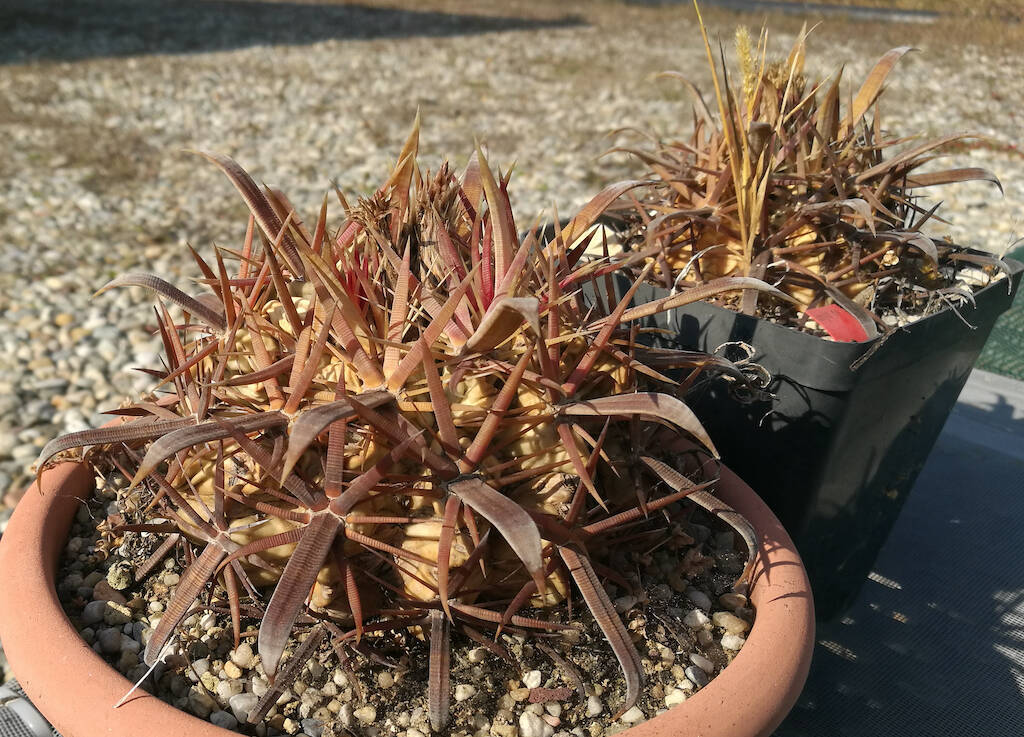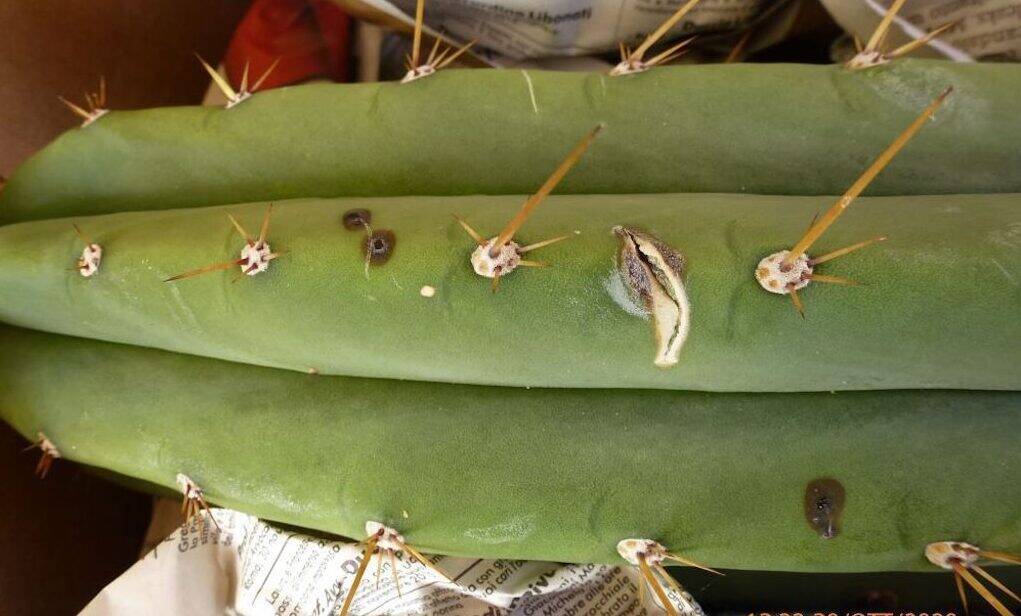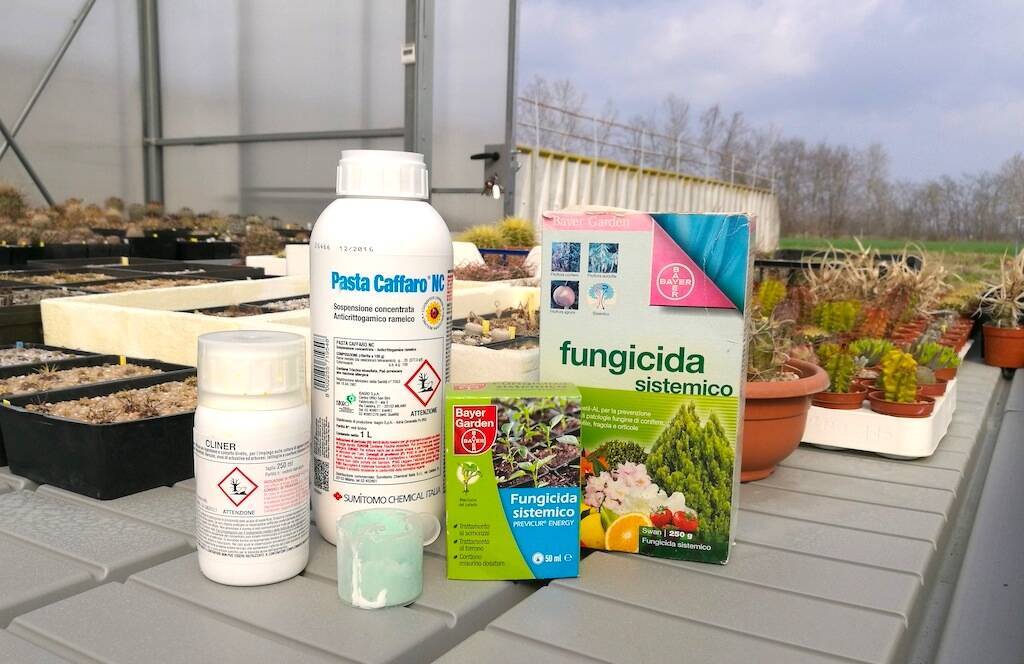Unfortunately it is a less rare phenomenon than one might think. The flower itself, the maximum expression of the plant, its instrument for reproducing and safeguarding the species, can transform itself into its executioner. With cacti, plants that require seasonal rest corresponding to the winter months, the flower can sometimes be fatal. It obviously only happens with those species that flower in mid-winter, therefore a small minority compared to all cacti. But it is often precisely from there, from that flower that blooms in November, December or January, that the rot is triggered and which, if neglected or not seen, can lead the specimen to death. This is what happened to two of my Ferocactus latispinus in recent days. Or rather, in the past few weeks, except that the damage has become apparent recently. And now it was too late to intervene and save the plants.
In this article we look into this phenomenon and see what can be done to prevent it or, at least, be able to intervene before the rot passes from the flower to the plant. (…)
Per proseguire nella lettura dell'articolo Accedi o Abbonati
To continue reading the article LogIn or Subscribe





